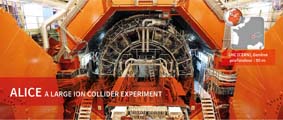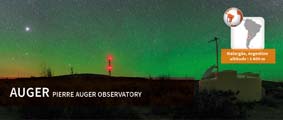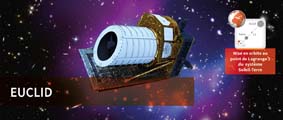IN2P3 carries out experiments in three major scientific fields:
- particle and hadronic physics which focuses on the most elementary components of matter (quarks, leptons and bosons) and their interactions;
- nuclear physics and astrophysics which study the structure and dynamics of atomic nuclei, thus providing essential elements for astrophysical modelling of star formation and for a wide range of applications;
- astroparticle physics and cosmology which study the physics of Universe using different cosmic messengers (photons, cosmic rays, neutrinos, gravitational waves) to better understand its dynamics and evolution from its origins right up to the present day.
To achieve this, IN2P3 relies on intense technological developments in three key areas:
- accelerators - instruments which generate and accelerate beams of particles or atomic nuclei and make them collide or propel them into targets;
- detectors which, according to their nature, are used to identify and characterise the mass, speed, energy and origins of the products generated by collisions or emitted by cosmic phenomena;
- computing and data science for processing, storing and probing the huge data flows generated by scientific experiments.
IN2P3 also conducts interdisciplinary research projects at the crossroads of these and other scientific disciplines in the fields of energy, environment and health. This work is structured around 5 main areas:
- innovative nuclear energy production processes and techniques
- innovative nuclear techniques for health
- radionuclides in the environment
- the synthesis of nuclei and organic matter in the Universe
- new imaging techniques for Earth studies and archaeology
Major advances in knowledge and discoveries
Since its foundation in 1971, IN2P3 has been part of the great discoveries in the physics of the two infinities. Among the most recent examples of these are the discovery of the Higgs boson in 2012, an essential link of the world of elementary particles, and the first direct detection of gravitational waves in 2016 which heralded the advent of a new form of detection of the most intense phenomena in the universe and a new probe of matter. The Institute's scientists have also contributed to the discovery of the acceleration of the expansion of the Universe which seems to be linked to a new form of energy - dark energy. They also worked on the Planck space mission, observing the cosmic microwave background, a remnant of light produced at the very beginning of the universe, with unprecedented precision. The Institute also plays a key role in the search for dark matter, the effects of which are being measured although the matter itself has yet to be identified. For this work, IN2P3 benefits from using its underground facilities, the Laboratoire Souterrain de Modane, in the Savoie region, along with underground laboratories in other countries. In neutrino physics, IN2P3 has distinguished itself with nuclear reactor experiments, the latest of which, Double Chooz, contributed to the measurement of the last parameter of neutrino oscillations. French researchers have also observed indications of the production of new super-heavy elements using the GANIL accelerator in Caen.



































